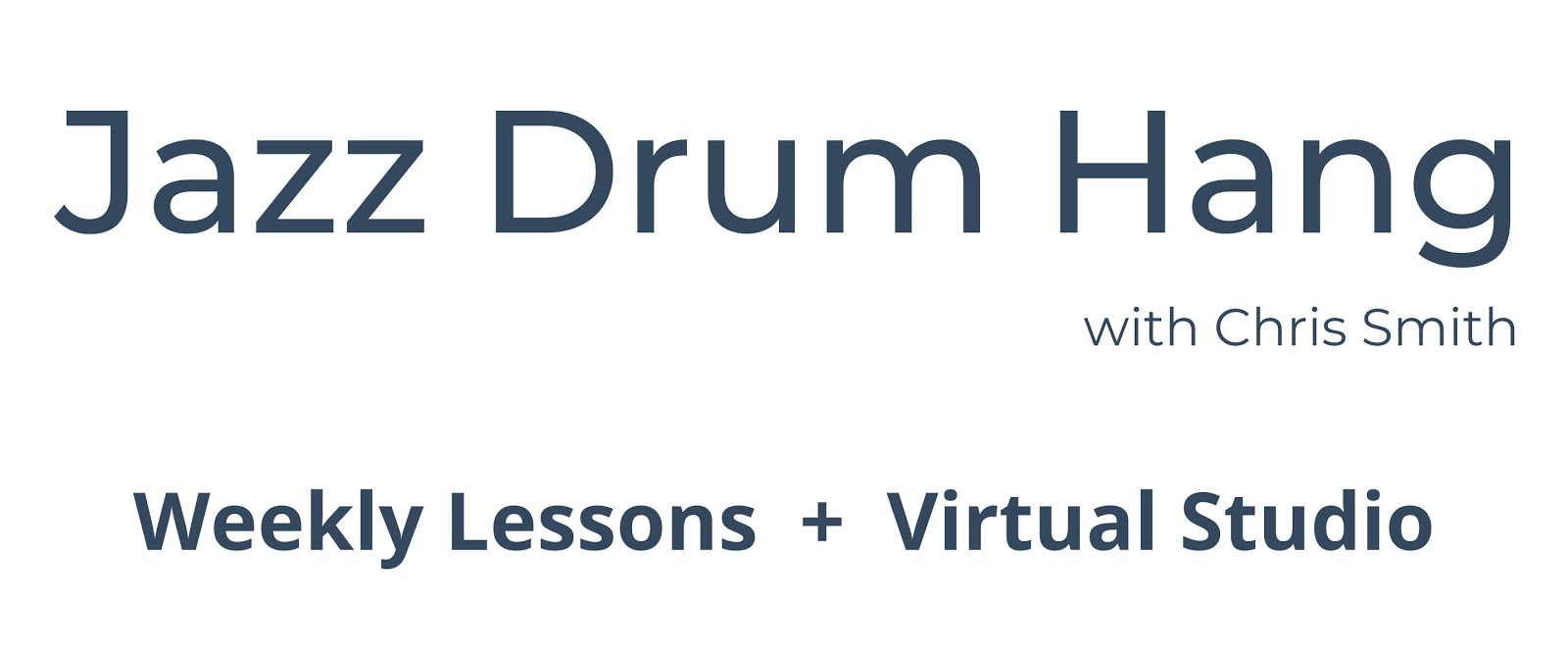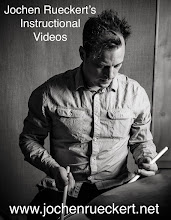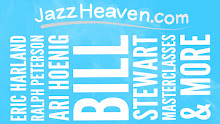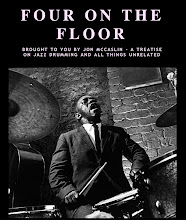Thanks to Curtis Nowosad for hipping me to this great interview with Max Roach via the Facebook. This is from the January 1979 issue of Modern Drummer.
"Max Roach" by Harold Howland
HH: Along with Kenny Clarke, you were a founder of the bop style, changing the rhythmic emphasis from the bass and snare drum to the ride cymbal, using the other components for accents and color. There are those who say that Kenny was primarily responsible for this transition and that you carried it further. Is that how you see it?
MR: Kenny's influence was that you should get more involved in harmonic playing. Kenny plays piano and is a total percussionist. It had little to do with the technique of playing. Kenny was in the Army when I came on the scene. I knew nothing about him until after recording with Coleman Hawkins. That style of playing was already established around New York. The first person I heard on radio who played broken rhythms using the bass drum and hi-hat was Jo Jones. Actually, Chick Webb, Jo Jones, O'Neil Spencer, and Sidney Catlett had the greatest influence on me.
HH: How do you view the drummer's role as an accompanist and timekeeper?
MR: Drummers are required to support constantly. We're expected to be the rhythmic foundation. One thing I gloried in, working with people like Charlie Parker, was the built-in rhythm section. You didn't need a drummer or a bass player to know where the time was. If you don't lay the beat down for some players there's no form or rhythm in their playing. You're almost like a slave. "Bam bam bam bam" or "Boom bam de-boom-boom bam," whatever it is. I think the instrument goes beyond that.
Most percussionists spend a lot of time developing themselves on the instrument. A lot of things we do never have a chance to come out. When the moment comes where the band finally turns around and says, "Okay, you got it," most of the time you overdo it.
Excluding a wind instrument, there's always the danger of sounding inhuman. You're not obliged to take a breath before you do something. Wind instrumentalists are obliged to be human; they have periods, question marks, exclamation marks, phrases. But there's always the danger, with people who play piano, percussion, or string instruments, of not creating phrases that speak out to people. You can just rattle for hours. That characteristic is not only unmusical, but unnatural as well.
Someone asked me about the use of the metronome and I answered that you should use it only if you cannot keep time and are trying to develop a sense of holding time at a certain level. But to play metronomic time is another inhuman aspect. The time should be at the same place, but to make it elastic sounding, it may have to get a little faster or slower. A metronome locks you into "bap bap bap bap."
With my quartet, holding time for each other would lock us in. My charge with the group is to add color and be dynamic in my accompaniment, not just to keep time for the players. They keep time. I can go outside of the time. We sometimes deal with sounds that have nothing to do with the meter, just for an effect. Everyone should have that time.
HH: How do you approach solo improvisation?
MR: When I go into an improvisational section it is not preplanned. I have all the techniques at my disposal. When someone else stops, I'm permitted to deal with my thoughts on a particular musical subject. I come to it free. The first thing I throw down into the instrument will determine the pattern and its development. Within, I'm conscious of what I call conversational structure, saying something to myself and answering.
I try not to do things because I can do them. I try to allow the moment to create itself, to respect silence, to say something and let the audience absorb it.
HH: Many of your solos use brief melodic, rhythmic refrains, usually accompanied by bass drum, hi-hat vamps. These figures unify and contrast the improvised sections--kind of a loose rondo form. Do you feel that this technique is something in which you particularly are an innovator?
MR: Yes, maybe so. During an evening, week, or month of performing I play a host of drum solos. To live with myself I have to constantly set up new things, and interest the members of the group. We all have to do this. The rule is not that you killed them last night--you know what will bring the audience to their feet. That's not the rule for the creative musician. You should try each night to introduce something that you didn't do the night before. It's always a challenge, for Billy or Cecil or Calvin or whoever, to do something that wasn't done before. The public may not be aware of that, but for us it means we're developing ideas for new recordings, for new pieces.
I do set up a call and response thing, something to return to that's still within the structure of the piece. Music to me isn't merely a matter of being melodic and harmonic. When you deal with the essence of art, it has more to do with design. If it doesn't have some kind of design, then it doesn't make sense to me, which is why I appreciate Monk and Bartok.
HH: Are hand positions and wrist action something to which you've devoted a lot of attention?
MR: Wasted motion. That is what was different in the rudimental approach to the instrument from the way we viewed it. On 52nd Street everything was close to the instrument because you played exceptionally fast. You had to play at a certain volume, so you didn't raise your hands high. You had to play what was acoustically best suited for small clubs.
HH: What about your brush technique? You're constantly flipping the left hand over, creating a continuous swishing triplet sound. How did you develop this?
MR: I learned the law of playing brushes from O'Neil Spencer and Big Sid Catlett. The brush is really not supposed to leave the drum. You're supposed to create a sweeping effect to get the accents without picking the brush up off the drum.
HH: In 1961 you said, "I will never again play anything that does not have social significance." Today, as you return to full-time performing, how do you feel about that statement?
MR: Well, I'm still at the same place, and I'll tell you why. There are those who think that art is for the sake of art, but actually it never is. Art is a powerful weapon that society, or the powers that be, use to control or direct the way people think. Culture is used to perpetuate the status quo of a society. Even though I'm involved in music for the sake of entertainment, I always hope to offer some kind of enlightenment.



















No comments:
Post a Comment